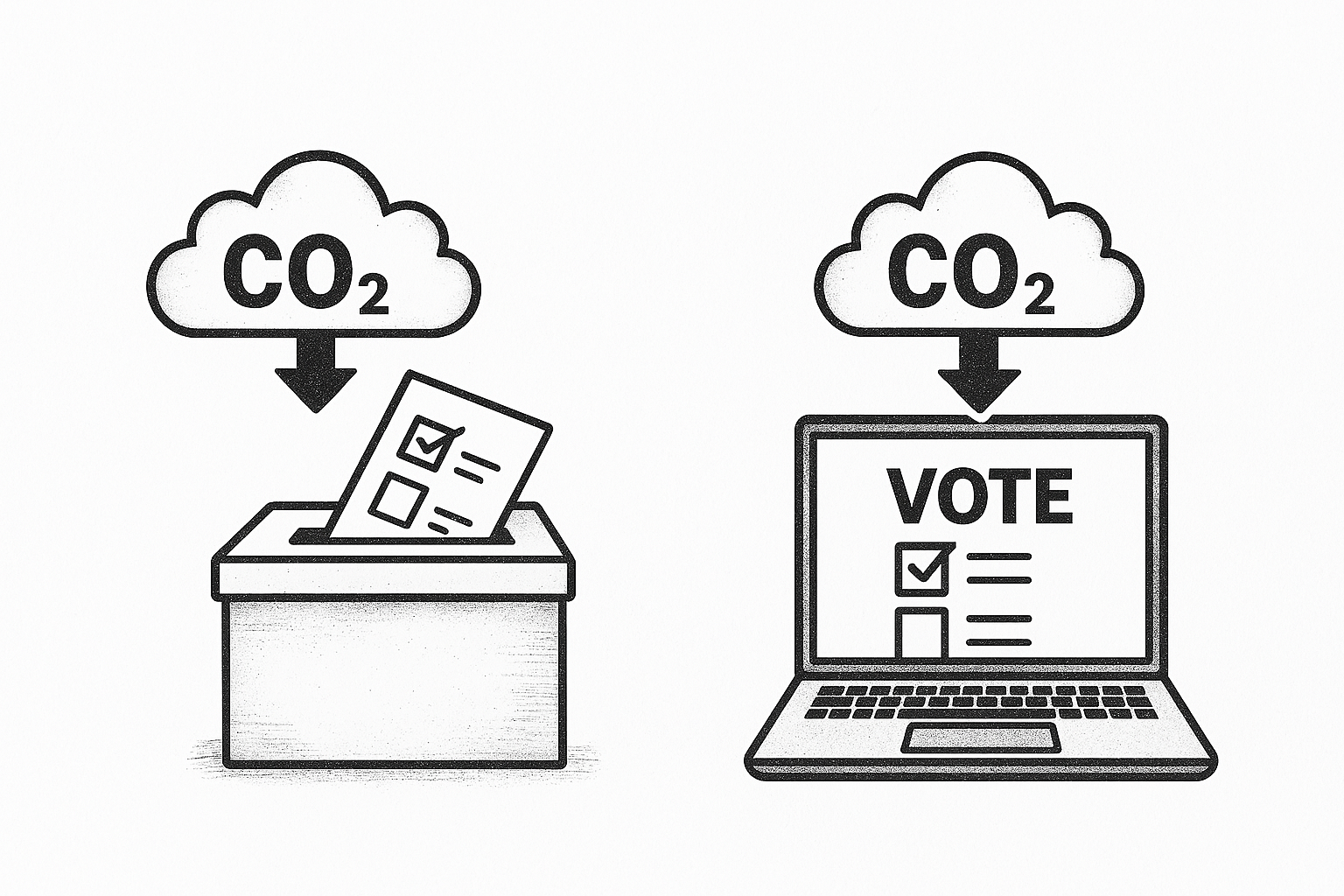Abstract
This paper compares the carbon footprint of paper voting in polling stations with the emissions of remote vote casting via the Internet. We identify the process steps with the most significant emissions in terms of CO2 equivalent, design a methodology to quantify these emissions and give a comparative analysis based on the example of the Estonian parliamentary elections of 2023. Our results show that paper voting has about 180 times higher carbon footprint, owing largely to the need to transport the voters to the polling stations and back.

